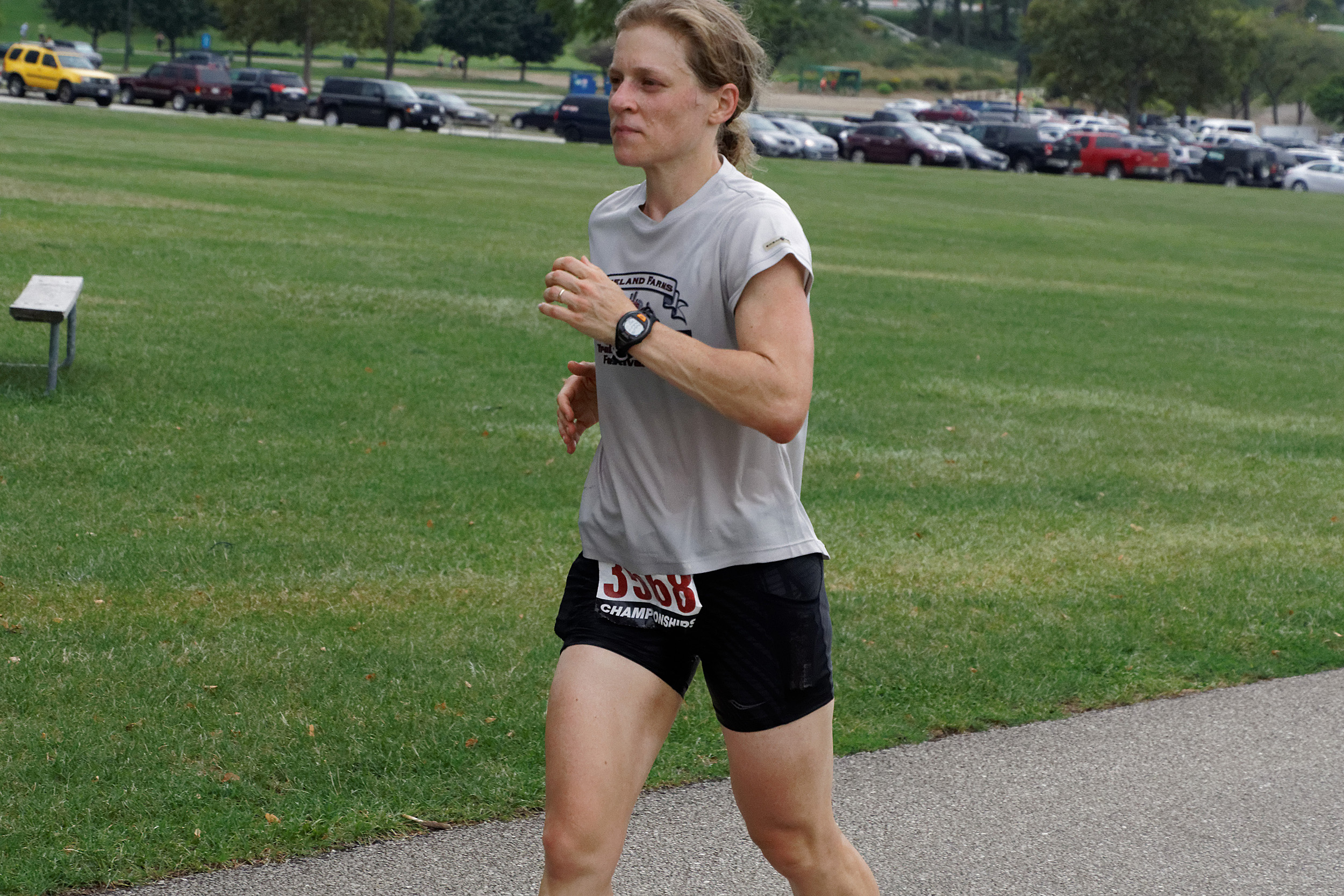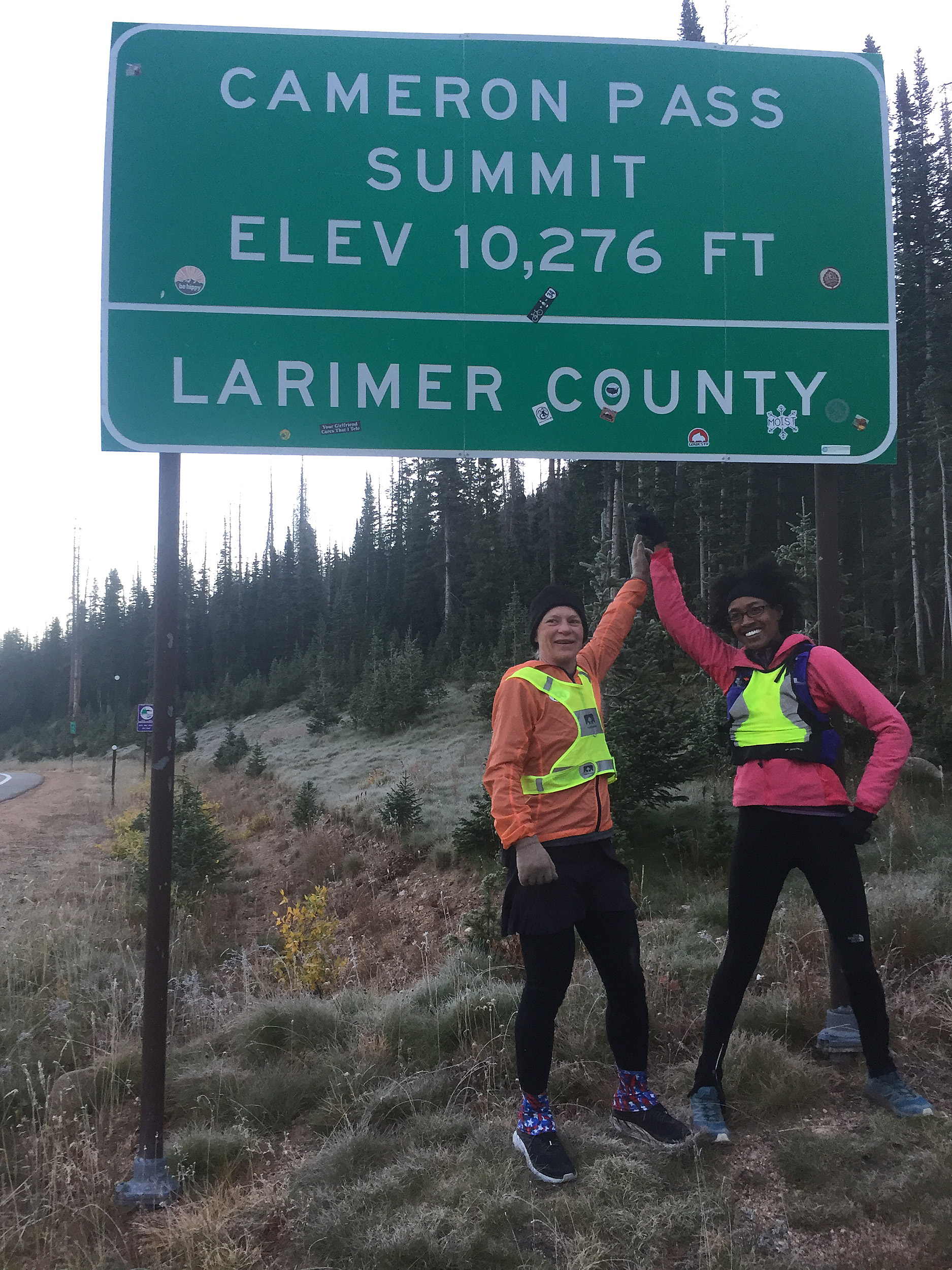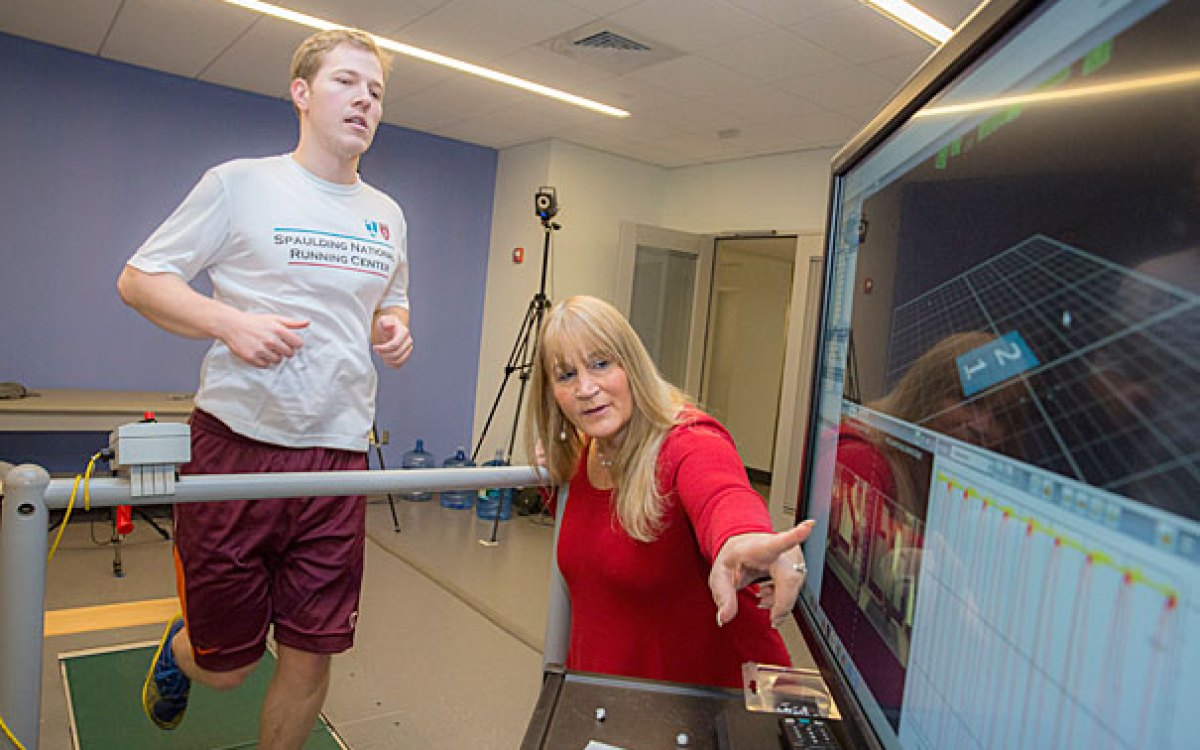
Last summer, Harvard Professor Jenny Hoffman attempted a six-week road trip — on foot.
Photos courtesy of Jenny Hoffman
Run, Jenny, run!
A Harvard physics professor spends a sabbatical trying to break the record for fastest trans-America run
Her knee buckled like a folding chair, and then it was over.
Ticking off an average of 61 grueling miles per day, Harvard physicist Jenny Hoffman, the Clowes Professor of Science, covered 2,560 miles in six weeks, through high winds and impassable roads, a plague of grasshoppers, and bone-deep fatigue. Just seven more days, 460 miles, and she would have smashed the women’s record for a trans-America run by nearly six days.
Hoffman wanted to keep going, but doctors warned that if she did she risked irreparable damage. An ultramarathoner and mother of three, the 41-year-old doesn’t let goals escape without a fight, but this time she had to let one go.
She did achieve another: coming to terms with the loss of her father.
“To be able to run through the country,” Hoffman said, “I can think about it partly as running for him and having an experience that he wasn’t able to have. I think I came to peace with that in a way I hadn’t before.”
The idea of spending her sabbatical on a two-month slog across the U.S. without even one day of rest seemed crazy yet irresistible — in some ways even fated. Hoffman had been running since high school, accumulating more wins the higher the mileage, beating men and women alike. She’d completed dozens of marathons and ultramarathons and earned three consecutive national championships in USA Track and Field’s 24-Hour Run, covering 142 miles in one day.
Besides breaking the record, Hoffman also planned to raise awareness and money to fight gerrymandering, which she called “a fundamental threat to our democracy.” That, and she would have the rare luxury of unencumbered time to reflect on her life — or so she thought.
On Sept. 11 at 4 a.m., Hoffman stood in the dark in front of San Francisco’s City Hall. Wearing a neon-green reflective vest, a headlamp, and a running skirt, with two ultrarunning crew members following in a car and RV, she set off. Almost every day, she posted an update on Facebook. On her first day, she wrote: “Finally headed home.”
Jenny Hoffman (left) and long-time friend Serena Eley at the top of Colorado’s Cameron pass. The two ran 70 miles together that day. Eley is also an ultrarunner and professor of physics at the Colorado School of Mines.

Each morning, she started at 3 or 4 a.m. After just a few days, she realized she had underestimated the exhaustion, both physical and mental, of waking up to 60 or more miles every day. “There were probably only a few hours with actual, productive thought every day,” she said, “and the rest of it was: When is the next water stop going to be? And what am I going to eat? And how many miles do I have left? A lot of it was low-level logistical thought.”
Of course, proper hydration and food were essential. For Hoffman, that meant packing in 8,000 to 9,000 calories each day. She gobbled up Clif bars and cookies stashed in one of the four pockets in her running skirt. Most nights, she ate three bun-less burgers before collapsing into bed. Most days, she scarfed down peanut butter and jelly sandwiches, potato chips, Oreos, and more peanut butter cups than she could count, often while running. She still lost weight.
Day 7. Sore shin. No running, just a 20-mile walk. No trees, either. “Nevada desert is beautiful, sort of moon-like, but lots of little yellow flowers and lizards,” Hoffman wrote on Facebook.
On a typical day, Hoffman ran until twilight, rarely speaking to anyone but her two-man crew. One, in a car, leapfrogged around to deliver water and food every three miles or so. The other took the RV to another corn field or church parking lot to set up camp. In those 60- to 70-mile days, passing not much more than a gas station in a one-road town, she had more than enough time alone to think.
After California, she passed through Nevada, Utah, and Colorado, before heading through the Midwest. Somewhere in the middle, she also passed the three-year anniversary of her dad’s death.
“I owe my father a tremendous amount,” Hoffman said. After serving as first lieutenant in the U.S. Army, he earned a master’s from Harvard Business School, eventually starting his own venture capital firm. When Hoffman got into Harvard as an undergraduate, his unconditional support helped her get through.
“On the other hand,” Hoffman said, “he suffered from a lot of anxieties. He wasn’t able to enjoy many of the things that I enjoy.” Growing up, she saw her father hide inside routine, walling himself off from new experiences. Later in life, he hid inside books that overflowed his bookcases, forming piles all over the house. In 2016, when she lost him, Hoffman teetered between gratitude and frustration.
Day 15. “Fertilized” more corn fields.
In rural America, Hoffman brushed up against flora — mostly corn — and fauna. On day 15, a prairie dog made camp in her clothing drawer. On day 20, a mountain lion stalked her from the woods along the edge of the road before two rumbling trucks scared the cat away. And, on day 26, a swirl of grasshoppers appeared, so thick they popped like popcorn against her shins.
Day 28. Stiff legs. “It felt like one of those horrible nightmares when you’re running as fast as you can but everything is in slow motion,” Hoffman wrote.
Every day brought new challenges and surprises. The aptly named Mud Road in Nebraska, for instance, proved impassable. Some of the state’s bridges, damaged in the spring 2019 floods, were still closed. Pedestrian-accessible bridges (like cellphone reception) are rare commodities for trans-America runners; losing one can require a long work-around, sometimes through sloppy underpasses or bridges with no shoulder and heavy traffic.
And there were moments of wonder like the morning she ran through an enormous Indiana wind farm before sunrise, red lights blinking above like alien ships.
Then, on Oct. 22, day 42, Hoffman ran though northeast Ohio, joined here and there by a few runner friends. Late in the day, just east of Akron, her knee jammed. So, after a mere 57 miles, she ended early to ice and rest.
Hoffman woke the next morning determined to push her body through one more week. But she didn’t make it more than two stiff-legged miles before she had to stop. Later that day, an emergency MRI showed she had torn the root of the meniscus in her right knee. She consulted three different doctors, but they all said the same thing: You need surgery — and fast — or you may never run again.
Day 43: In her last Facebook entry, Hoffman ended her saga with a quote from gonzo journalist Hunter S. Thompson: “Life’s journey is not to arrive at the grave safely in a well-preserved body, but rather to skid in sideways, totally worn out, shouting ‘holy s!#$, what a ride!’”
Back home, Hoffman recalled one specific evening of her journey. Running parallel to railroad tracks, she found herself counting train cars. One had at least 120. Her father had loved trains. That night, camped near the tracks, she listened to their whistles blow into the night and thought about him. The sound, she said, “felt grounding after so many isolated desert miles.”







